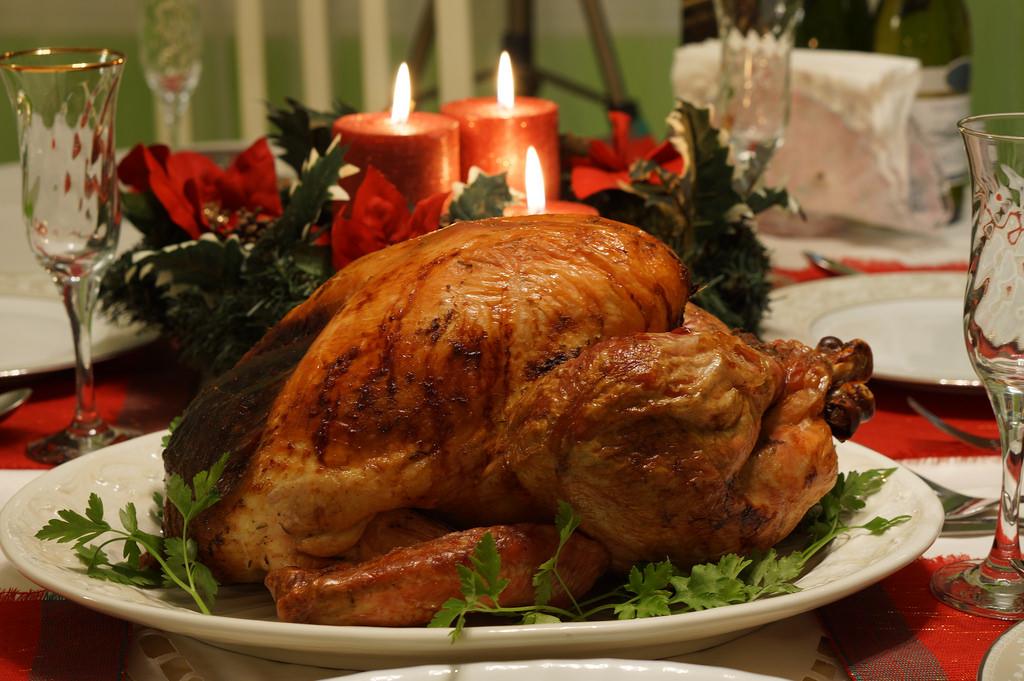Thanksgiving is a time for food and family. The holiday reaches back into time, exemplifying the unity of America. Most believe the first Thanksgiving was shared between the Pilgrims and Native Americans, and although this is not quite the case, the resulting traditions help bring the American people closer together.
In fact, today’s Thanksgiving traditions are nearly identical across the nation. Sophomore Morgan Lewis from Kansas said he often spends Thanksgiving with his mother in Virginia. Besides seeing family, Lewis said food is in abundance.
“My mother likes to cook a lot of different things,” Lewis said. “So it’s pecan pie, ham, turkey, biscuits. It’s a lot more.”
Senior Spencer Tauchen mentioned “the classics,” including turkey and cranberry sauce. He recommends removing the backbone of the turkey, a process called spatchcocking.
“I eat very normal [Thanksgiving] food, and a lot of it,” Tauchen said. “The key though: spatchcock turkey. So much better than normal turkey. You have to spatchcock it. It cooks through faster.”
Turkey is an integral part of the traditional Thanksgiving meal. This arose simply as a result of the location where Thanksgiving began.
“When New England families celebrated a holiday, turkey was simply a common dish,” Michelle Morris, MU American history professor, said in an email. “The same thing can be said about cranberries and pumpkins. Cranberries did not become a popular dish until the nineteenth century because of the cost of sugar. Potatoes were originally native to South America, but they had become a commonly eaten food in New England by the nineteenth century.”
Morris identified two roots of today’s Thanksgiving traditions. There is, of course, the so-called first Thanksgiving in 1621 between the Pilgrims and the Wampanoag Native Americans. According to Morris, the information available about this event comes from a letter sent by a colonist named Edward Winslow.
“We know that the colonists contributed waterfowl to the feast,” Morris said in the email. “These were probably geese and ducks. Although turkeys are native to New England, the first Thanksgiving probably did not include them. The Wampanoags contributed venison … Likely additions to the feast are corn, fish, shellfish and beer.”
However, this feast was not thought of as “Thanksgiving.” It was instead simply a harvest festival. The “Thanksgiving” concept comes from a separate tradition.
“The Pilgrims, Puritans, and even the Anglicans further south did have a tradition of Thanksgivings,” Morris said in the email. “These were part of the religious cycle of feasting and fasting.”
A feast day would be held when the community believed God had blessed them, and this eventually became a regular event during harvest time by the late eighteenth century.
According to Morris, these two roots have combined into the common notion of Thanksgiving today, although the association was not common until the early twentieth century.
“Sometime around 1820, Edward Winslow’s letter was rediscovered and republished,” Morris said. “At this point some people began to connect the early Pilgrim harvest festival to the New England tradition of Thanksgiving.”
Thanksgiving only officially became a national holiday in 1863, when the Union started having more success in the Civil War.
“You might think of Lincoln’s declaration of Thanksgiving as a way of saying that ‘real’ American culture was New England culture,” Morris said.
Historical speculation aside, Thanksgiving is one of America’s favorite holidays, ranking second on a poll conducted by FiveThirtyEight in 2015. MU students express similar sentiments.
“I think Thanksgiving is my favorite holiday because it’s more family oriented,” sophomore Anna Nortrup said.
Lewis reiterated this idea.
“For me, [Thanksgiving] revolves a lot around just spending time with your family,” he said, “It’s a time just to catch up with all your friends and get to show who you’re really happy to be with.”
Tauchen, however, took a slightly different approach.
“To me [Thanksgiving] means when it’s finally socially acceptable to start listening to Christmas music,” Tauchen said.
_Edited by Brooke Collier | [email protected]_








